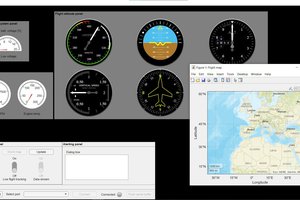Musical Instrument for Parkinson's Patients (Levels 1, 2, and 3)
Overview
A specialized musical instrument resembling three interconnected drums like bongos mounted on a stand, designed specifically for Parkinson's patients. It combines music therapy with interactive gameplay to enhance the patient's quality of life through exercise, emotional well-being, and family engagement.
Key Features
1. Interactive Music Therapy:
- Instrument Design: A set of three interconnected drums on a stable stand, ensuring ease of use for patients with varying levels of Parkinson's.
- Sensor and Timer Integration: Embedded sensors detect patient taps, while a timer measures response times for precise feedback.
- LED Indicators: LEDs light up on each drum's surface, prompting the patient to tap. Each drum produces a musical note, creating a dynamic and engaging experience.
- Song Selection: Patients can choose from a variety of songs within the app, making the activity both fun and therapeutic.
- Music Levels: The background music has three levels—slow, medium, and fast.
- Senses Engagement: Patients engage their auditory, visual, and tactile senses by hearing the music, seeing the light, and tapping the drum surface.
- Cognitive Benefits: The therapy improves cognitive functions affected by Parkinson’s disease.
2. Comprehensive Data Tracking and Analysis:
- Performance Metrics: Tracks daily, weekly, monthly, and quarterly performance data to monitor patient progress.
- Reaction Time: The instrument measures the time interval between the LED signal and the patient’s tap, providing insights into responsiveness.
- Accuracy Metrics: Tracking whether patients tap the correct drum offers information about coordination and cognitive focus.
- Comprehensive Insights: AI-generated data charts and summary reports help healthcare providers monitor disease progression and adjust treatment plans.
- Statistical Graphs:
- Points Line: Represents the moments when the app signals the LED.
- Response Line: Shows the patient's response times by indicating when they tap the LED.
- Time Analysis: Graphically displays the time interval between the signal and the patient's tap, providing insights into their responsiveness and improvements over time.
Benefits:
- Motor Function Improvement: The instrument encourages patients to tap the drums, promoting hand movement and enhancing motor functions.
- Emotional Well-being: Engaging with music and rhythm can reduce depression and anxiety, improving overall emotional health.
- Family Engagement: The interactive nature of the instrument encourages family members to participate, fostering connections and support.
- Data-Driven Insights: Through data analysis, doctors can monitor patient stability, track progress, and adjust treatment plans effectively.
- Universal Access: The instrument’s design ensures accessibility for patients regardless of socio-economic status, contributing to health equity.
- Personalized Care: Offers real-time information that can be used to tailor personalized care plans for each patient, enhancing the effectiveness of their treatment.
Conclusion:
The musical instrument for Parkinson's patients represents an innovative approach to addressing the challenges faced by individuals with this condition. This instrument will improve Parkinson's patients' lives by combining music therapy for improving motor functions & mental well-being, and tracking data daily, weekly, and monthly, showing the progress of patient health status for better medication and treatment. It will also encourage family engagement. This instrument aligns with SDGs 3 and 10, promoting good health and well-being while reducing inequalities. This holistic tool not only enhances the quality of life for Parkinson's patients but also supports broader goals of health equity and universal access to care.
 Tala Badran
Tala Badran
 Davide Cagnoni
Davide Cagnoni
 Noah
Noah
 Piotr Gaczkowski
Piotr Gaczkowski
 donaldbough
donaldbough